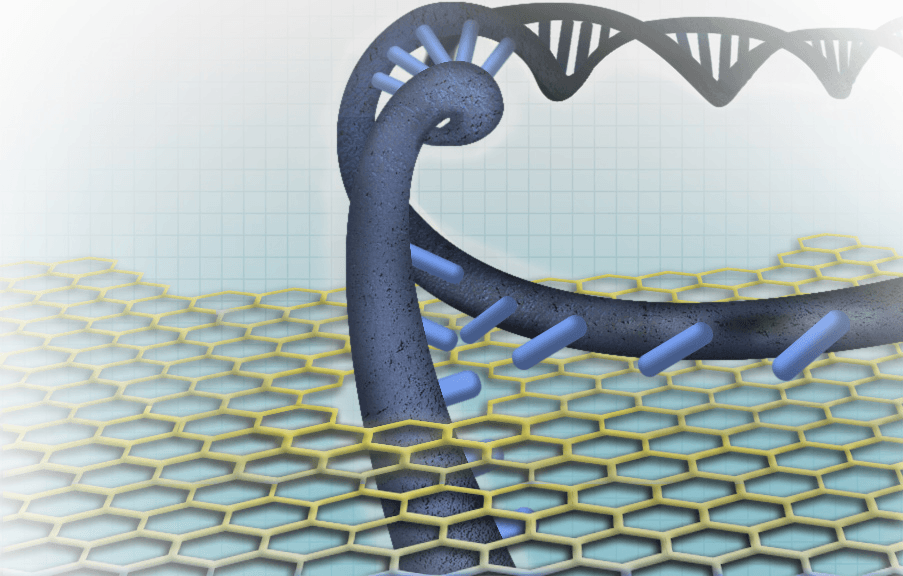If you’ve ever used pencil lead, you know what graphite looks like. Graphene is essentially a single layer (one atom thick) of graphite, or a single layer of carbon atoms, bonded in a repeating hexagonal pattern. It’s considered the strongest material in the world, which might be hard to imagine when it seems like your pencil breaks every time it hits a page too hard. Aside from its strength, graphene has properties that have been identified as useful for DNA sequencing.
Source Image: Vincenzo Lombardo
Nanopore sequencing is an existing technique, but when it was first developed, DNA was pulled through a hole in a protein instead of graphene. This protein-based method of nanopore sequencing relies on the flow of ions, particles that carry an electric charge, through the pore. This flow of ions creates a current. As the bases of the DNA strand move through the pore, each base alters this ion flow in a different way, causing changes in the current which can then be measured to identify the base. However, this method is far from perfect, and electrical interference and limited selectivity are some of the known issues encountered when using it.
The new technique was simulated by a research team from the National Institute of Standards and Technology (NIST). It involves pulling a strand of DNA through a hole in a graphene sheet. Instead of measuring ion flow, temporary chemical bonds between the DNA bases and the complementary bases attached to the graphene are formed as the DNA strand passes through the nanopore. The formation of the bond causes a pull on the graphene and the breaking of the bond ends the pull. The changes in mechanical strain felt by the graphene can then be converted into measurable changes in electrical current, which are used to identify the base of DNA.
The results of the study indicate that the newly developed technique could potentially identify about 66 million bases per second with an accuracy of 90% and no false positives. The researchers believe that if four graphene sheets are used, with one of the four bases attached to each, a 99.99% accuracy level can be reached. Graphene nanopore sequencing also reduces the need for tools like advanced data processing and microscopes, and it could potentially be faster and less expensive than the conventional sequencing techniques used today. Making DNA sequencing more accessible makes it easier for scientists to discover mutations associated with genetic diseases and to develop more targeted therapies for these disorders. It can also help determine how variations in an individual’s genome affect the way they respond to a certain drug, which can lead to more personalized medicine in the future.
Feature Image Source: Nanopore Sequencing by National Human Genome Research Institute










